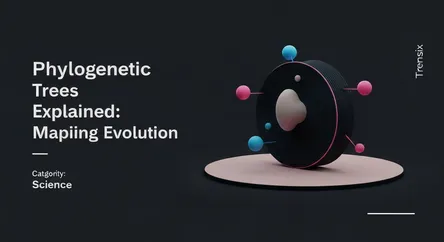Science
Phylogenetic Trees Explained: Mapping Evolution

A look at phylogenetic trees, the diagrams that map the evolutionary history of life, and their growing importance in science and medicine.
What is it?
A phylogenetic tree is a branching diagram that illustrates the evolutionary relationships among various biological species. Often called the "Tree of Life," it shows how different organisms, genes, or species are thought to have evolved from a series of common ancestors. The tree's structure represents a hypothesis about these evolutionary connections. The tips of the branches represent the observed organisms (taxa), while the nodes where branches diverge represent the inferred common ancestors from which descendants split. Scientists build these trees by comparing physical characteristics (morphology) or, more commonly, genetic data like DNA or protein sequences. Species with fewer differences are considered more closely related and are positioned closer together on the tree.
Why is it trending?
The use of phylogenetic trees is surging due to advancements in DNA sequencing technology and computational power, which make it easier to analyze vast amounts of genetic data. This has made them a central tool in diverse fields. In epidemiology, phylogenetic analysis has been crucial for tracking the real-time evolution and spread of viruses, such as SARS-CoV-2, which causes COVID-19. In conservation biology, these trees help identify evolutionarily distinct and endangered species, guiding efforts to preserve biodiversity and Earth's evolutionary heritage. Researchers also use them extensively in genomics, ecology, and even forensics to understand relationships and origins.
How does it affect people?
Phylogenetic analysis has significant real-world impacts. In medicine, it is used to trace the source and transmission of infectious diseases like HIV, helping to inform public health responses. It also aids in cancer research by mapping the evolution of tumor cells. In forensic science, phylogenetic methods can be used to analyze DNA evidence in criminal cases, for instance, to trace the source of a viral infection in a criminal transmission case. Furthermore, by identifying species that are closely related to those that produce medically useful compounds, phylogenetics can accelerate drug discovery. Conservation efforts guided by this science help maintain healthy ecosystems, which provide essential services to humanity.